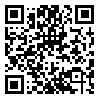Volume 11 - Articles-1400
MEJDS (2021) 11: 86 |
Back to browse issues page
Download citation:
BibTeX | RIS | EndNote | Medlars | ProCite | Reference Manager | RefWorks
Send citation to:



BibTeX | RIS | EndNote | Medlars | ProCite | Reference Manager | RefWorks
Send citation to:
Dehghanpour V, Rafiepoor A, Abolmaali Alhoseini K, Sabet M, Vahid Dastjerdi M. The Structural Equation Modeling of Pain Coping Strategies with Brain/Behavioral Systems and Distress Tolerance in Patients with Migraines. MEJDS 2021; 11 :86-86
URL: http://jdisabilstud.org/article-1-2491-en.html
URL: http://jdisabilstud.org/article-1-2491-en.html
Vida Dehghanpour1 
 , Amin Rafiepoor *
, Amin Rafiepoor * 
 2, Khadije Abolmaali Alhoseini3
2, Khadije Abolmaali Alhoseini3 
 , Mehrdad Sabet3
, Mehrdad Sabet3 
 , Mehdi Vahid Dastjerdi4
, Mehdi Vahid Dastjerdi4 


 , Amin Rafiepoor *
, Amin Rafiepoor * 
 2, Khadije Abolmaali Alhoseini3
2, Khadije Abolmaali Alhoseini3 
 , Mehrdad Sabet3
, Mehrdad Sabet3 
 , Mehdi Vahid Dastjerdi4
, Mehdi Vahid Dastjerdi4 

1- Department of Health Psychology, Kish International Campus, Islamic Azad University
2- Department of Psychology, Faculty of Psychology, Payame Noor University
3- Department of Psychology, Rudehen Branch, Islamic Azad University
4- Department of Internal Medicine, Tehran Medical Branch, Islamic Azad University
2- Department of Psychology, Faculty of Psychology, Payame Noor University
3- Department of Psychology, Rudehen Branch, Islamic Azad University
4- Department of Internal Medicine, Tehran Medical Branch, Islamic Azad University
Abstract: (694 Views)
Background & Objectives: Migraine is a severe disorder, i.e., often accompanied by autonomic nervous system–related symptoms. Coping is an essential characteristic that can help some individuals adapt to the pain and prevent its recurrence and persistence. Brain/Behavioral systems seem to be associated with pain–related coping styles and pain intensity. Individuals without high anxiety tolerate an attempt to regulate their emotions by engaging in a vicious cycle of emotional dysfunction that affects their brain/behavioral systems. Cognitive–Emotional factors and personality traits seem to impact individuals with migraines; numerous behavioral, emotional, and cognitive patterns can also influence coping with pain. Thus, this study aimed to determine the relationship between brain/behavioral systems and pain management strategies mediated by anxiety tolerance in patients with migraine patients using structural equation modeling.
Methods: The statistical population of this correlational research included all patients with migraines referring to Bu Ali Hospital and two Neurology Clinics in Tehran City, Iran, in 2020. Among the eligible candidates, 374 patients were selected by the convenience sampling method. The inclusion criteria of the study were presenting migraine headache; consent to participate in the research, as well as no major psychiatric and substance abuse disorders. The exclusion criteria of the study included not providing informed consent forms to participate in the study, failure to complete the battery questionnaire, and presenting major psychiatric disorders and substance dependence based on the patients’ records and the demographic questionnaire data. Research tools included the Scale of Behavioral Inhibition/Activation System (Carver & White, 1994), Distress Tolerance Scale (Simons & Gaher, 2005), and Coping Strategies Questionnaire (Rosenstiel & Keefe, 1983). To analyze the obtained data, descriptive statistics, including mean and standard deviation, structural equation modeling, and Pearson correlation coefficient were used in SPSS and AMOS. The significance level of the tests was considered 0.05.
Results: The total path coefficient between brain/behavioral systems and coping strategies was positive and significant with pain (β=0.301, p=0.001). The direct path coefficient between the brain/behavioral systems and distress tolerance was positive and significant (β=0.525, p=0.001). The direct path coefficient between distress tolerance and coping strategies was positive and significant with pain (β=0.470, p=0.001). The direct path coefficient between the brain/behavioral system and coping strategies was positive and significant with pain (β=0.054, p=0.001). Furthermore, the indirect path coefficient between brain/behavioral systems and coping strategies was positive and significant with pain (β=0.247, p=0.001). The collected results suggested that the conceptual model fitted with the collected data (χ2/df=3.25, CFI=0.953, GFI=0.923, AGFI=0.875, & RMSEA=0.078).
Conclusion: The present study data revealed that distress tolerance positively and significantly mediated the relationship between brain/behavioral systems, coping strategies, and pain.
Methods: The statistical population of this correlational research included all patients with migraines referring to Bu Ali Hospital and two Neurology Clinics in Tehran City, Iran, in 2020. Among the eligible candidates, 374 patients were selected by the convenience sampling method. The inclusion criteria of the study were presenting migraine headache; consent to participate in the research, as well as no major psychiatric and substance abuse disorders. The exclusion criteria of the study included not providing informed consent forms to participate in the study, failure to complete the battery questionnaire, and presenting major psychiatric disorders and substance dependence based on the patients’ records and the demographic questionnaire data. Research tools included the Scale of Behavioral Inhibition/Activation System (Carver & White, 1994), Distress Tolerance Scale (Simons & Gaher, 2005), and Coping Strategies Questionnaire (Rosenstiel & Keefe, 1983). To analyze the obtained data, descriptive statistics, including mean and standard deviation, structural equation modeling, and Pearson correlation coefficient were used in SPSS and AMOS. The significance level of the tests was considered 0.05.
Results: The total path coefficient between brain/behavioral systems and coping strategies was positive and significant with pain (β=0.301, p=0.001). The direct path coefficient between the brain/behavioral systems and distress tolerance was positive and significant (β=0.525, p=0.001). The direct path coefficient between distress tolerance and coping strategies was positive and significant with pain (β=0.470, p=0.001). The direct path coefficient between the brain/behavioral system and coping strategies was positive and significant with pain (β=0.054, p=0.001). Furthermore, the indirect path coefficient between brain/behavioral systems and coping strategies was positive and significant with pain (β=0.247, p=0.001). The collected results suggested that the conceptual model fitted with the collected data (χ2/df=3.25, CFI=0.953, GFI=0.923, AGFI=0.875, & RMSEA=0.078).
Conclusion: The present study data revealed that distress tolerance positively and significantly mediated the relationship between brain/behavioral systems, coping strategies, and pain.
Type of Study: Original Research Article |
Subject:
Psychology
Send email to the article author
| Rights and permissions | |
 |
This work is licensed under a Creative Commons Attribution-NonCommercial 4.0 International License. |

